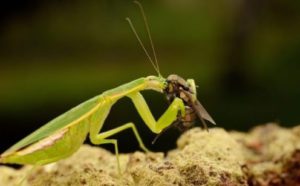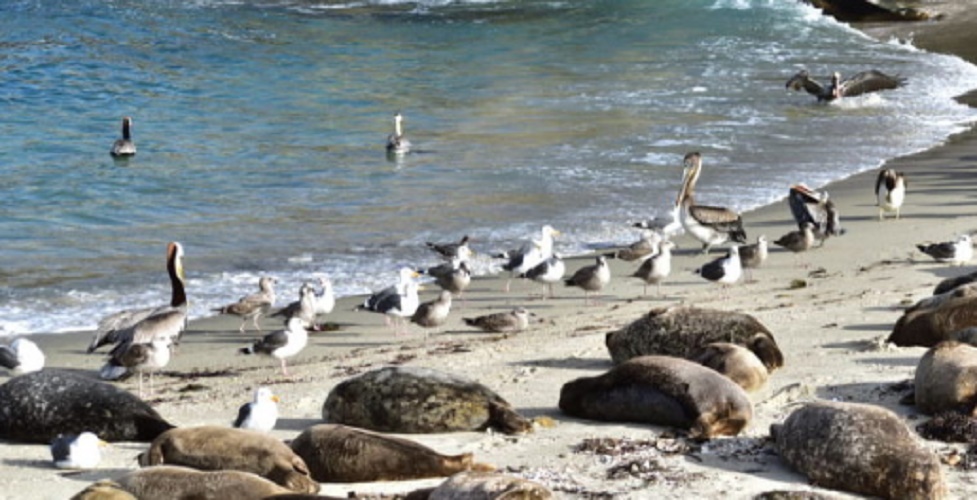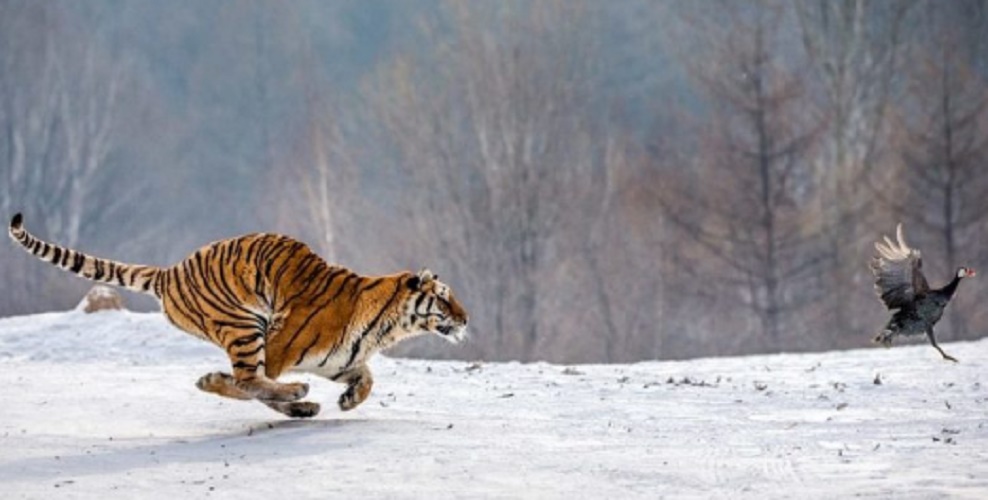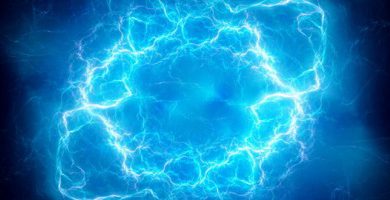What is a food web?
We explain what a food or food web is, differences with a food web chain and its characteristics in terrestrial or aquatic environments.
What is a food web (trophic network)?
It is called the food web or food cycle to the natural interconnection of all food chains belonging to an ecological community . It is usually represented visually, as a network or also a pyramid.
Remember that these food chains linearly describe the way in which matter and energy pass from one living being to another within a specific habitat . In other words, the sum of all the trophic chains of an ecosystem will result in its food web.
Trophic relationships between various life forms are understood based on a primary and fundamental distinction between organisms:
- Autotrophic organisms . They are able to synthesize their nutrients from inorganic matter
- Heterotrophic organisms . They are incapable of such synthesis and therefore are obliged to consume the organic matter of other living beings, whether autotrophic or heterotrophic.
Each of these categories composes a trophic level, in which all living beings can be classified. However, heterotrophic organisms or consumers are subdivided into different groups in turn, depending on what strategies they put in place to consume the organic matter of other living things and what kind of living things they usually feed on.
That is to say that among the heterotrophs are:
- Herbivores or primary consumers . They feed on plants and other autotrophic beings.
- Carnivores or secondary consumers . They feed on herbivores.
- Tertiary predators or consumers . They feed on both primary and secondary.
- Decomposing organisms : They are also heterotrophic, but they feed on decomposing organic matter, that is, dead.
All this classification is contemplated in the trophic networks, an ecological perspective that the English zoologist Charles Elton inaugurated with his text Animal Ecology (1927), the first attempt to organize living beings into functional groups according to their way of nourishing.
Then the contributions in the matter of Raymond Lindeman (1942) were added, insisting on the vital role of decomposers in the ecological circuit. All this vital to the understanding that we currently have in the way in which matter and energy are transmitted along the trophic networks of an ecosystem.
Food Chain
The difference between trophic networks and trophic chains is subtle: the sum of the trophic chains of an ecosystem will result in a trophic network . Trophic chains are linear, generally involving a single species from each food rung.
The networks instead try to combine them all to establish a map of how matter flows within the set of trophic relationships of a given place. That is why networks are more complex, more abundant and more difficult to graph and conceive .
Examples of food web chains

- In the sea, phytoplankton (plant) serve as food for malacostraceous crustaceans (krill), which are eaten by (very) small fish. These, in turn, are preyed upon by larger fish such as sardines, which serve as food for predators such as barracuda. These, when dying, are decomposed by scavengers such as crabs and other crustaceans.
- The rabbits eat plants and herbs, but are predated by pumas, foxes and other carnivores quadrupeds medium sized. When they die, the latter serve as food for carrion birds such as gallinazos (zamuros).
- The plants are parasitized by caterpillars, which serve as food for various small birds, in turn preyed upon by hunting birds such as the eagle or the hawk, whose bodies will be decomposed by bacteria and fungi when they die.
- The insects like locusts eat leaves of plants, insectivorous toads eat them snakes and toads. And finally, these snakes may be eaten by larger ones.
- The marine zooplankton serves as food for the whales, which capture them with their long bales, and these are preyed upon by man.
- The decomposing flesh of dead animals serves as food for the larvae of flies, which as they grow and become imagos will be preyed upon by spiders, in turn victims of other larger spiders, which serve as food for raccoons and coatis. finally preyed upon by carnivorous hunting snakes such as the rattlesnake.
- The grass nourishes the sheep, favorite victims of jaguars and pumas, who when they die are decomposed into humus by bacteria and fungi , thus nourishing the grass again.
- The bark of the trees serves as food for certain types of fungi, which are in turn food for small rodents (such as squirrels), which are in turn preyed upon by birds of prey (such as owls).
- The marine phytoplankton is the food of bivalves such as mussels, which are preyed upon by crabs and these in turn by seagulls.
- The beetles dung eat the feces of higher animals, but they are preyed upon by lizards, their food instead of mammals such as coyotes.
- Many insects such as bees subsist on floral nectar, and are preyed upon by spiders that in turn feed small birds, victims of wild cats such as the wild cat.
- The zooplankton marine feeds the small molluscs such as squid, fish preyed mainly by medium, in time to feed seals and marine mammals, which can in turn be hunted by orca whales.
- Decomposing organic matter feeds bacteria, which do the same with protozoa (such as free-living amoebae) and with certain nematodes (worms), which in turn provide sustenance for larger nematodes.
- The butterflies feed on nectar floral or fruit, and are food for predatory insects like the praying mantis. But this also serves as food for the bats, who are finally preyed upon by the possums.
- The weed supports large herbivores such as the zebra, which in turn is preyed upon by the crocodile.
- The earthworm ground feed on organic matter rotting in the earth itself, and are eaten in turn for small birds, also a victim of hunters felines like the cat that die back land organic matter to new feeding worms.
- The corn serves as food for the chickens, whose eggs are eaten by the weasels, and these in turn by the hunting snakes.
- Some aquatic spiders feed on hunting the larvae of other insects, during their submerged stage, and at the same time serve as prey for some river fish, which are preyed upon by the kingfisher bird or by storks.
- In the sea, plankton serve as food for small fish, and these for larger fish, which in turn are preyed upon by larger fish. The proverb says that there is always a bigger fish in the ocean.
- Certain parasitic insects on the fur of mammals (such as ticks) are the food of symbiotic birds that obtain their food by cleaning these mammals. These birds are in turn preyed upon by birds of prey such as the condor.
Aquatic Food Web

In aquatic ecosystems , trophic networks are fully adapted to life inside, below and on the surface of the water . This applies to large bodies of water such as oceans , lakes and other water deposits .
Aquatic food chains usually start in algae and certain types of photosynthetic microorganisms that float on the surface, called phytoplankton , and that play the role of autotrophic producers.
They are fed by primary consumers, usually other microorganisms ( zooplankton ) or tiny crustaceans , when not small fish, sponges or other simple life forms .
The next link involves larger fish, jellyfish and other very first predators. The third link of consumers already shows fish of good size, and even some final predators.
These chains must incorporate actors that feed on the sea, but do not live in it , such as seabirds (such as pelicans) capable of fishing from schools on the surface.
Also involved in trophic networks are marine mammals (seals, walruses, whales) that usually act as final predators (except in the case of the seal, a favorite prey for the orca whale and certain sharks). In lakes, rivers or certain islands, amphibians and reptiles also participate , as active predators according to their size (such as crocodiles).
Similarly, the decomposers of the sea are legion . Scavenger crustaceans, tiny fish and various types of microorganisms are responsible for the organic matter left over from the hunts, which in turn constitutes a rain of food for the deepest and darkest regions of the sea.
Food Land Network

In terrestrial ecosystems , trophic networks are even more vast than marine ones, since they involve a gigantic variety of autotrophic organisms (plants).
As a consequence, there is a wide diversity of primary consumers : from insects that feed on sap or nectar, through birds that devour fruits and ruminant herbivores of different volumes, to symbiotic and decomposing fungi, leaf-eating insects and a huge number of others.
Likewise, such a variety of herbivores supports an equally diversified number of secondary consumers , including especially small rodents, some primates and arthropods such as the spider.
They also depend on tertiary consumers, larger and carnivorous appetite, such as big cat hunters, bears, lizards, birds of prey, superior primates and, of course, the human being .
The most common decomposers are bacteria and other microorganisms, as well as fungi, scavenger insects or larvae of various types.
Food Pyramids And Their Levels

The functional groups listed here (producers, primary, secondary and tertiary consumers, decomposers) that make up all the chains and trophic networks, can be organized visually based on the criteria of abundance of each group .
That is, the farther away from the producing organisms , the less abundant life tends to be, given that the energy and nutritional requirements tend to be higher, as they have larger species. In this way, food chains and networks can be illustrated in the form of a pyramid: the trophic pyramid.
The pyramid will be sectioned in levels, each corresponding to a trophic link , having decomposers at the base, and together with them producers, forming the base of the pyramid: abundant and primary, do not depend on any link, but hold to those above.
On the producers will be the primary or herbivorous consumers, and on them the secondary and tertiary consumers, with as many levels as necessary, as we tend to species of greater size, greater appetite, but at the same time less abundance, something represented in the narrowing of the pyramid towards its tip.
Thus, for example, the final predators, located at the very tip of the pyramid, will have nothing above, but will depend nutritionally on all lower levels. However, it is important to remember that they also serve as food for decomposers.
Desert Food Web

The desert is an intense ecosystem, of life adapted to resist the brutal daily temperatures and the terrible drought, which is a challenge given that there is a scarce vegetation in these places, designed to resist a long time without water or to capture it from the air, and therefore a very low biodiversity rate .
However, in the desert it is possible to find all the trophic levels of a pyramid : the producers, among which will be the xerophytic plants, such as cacti, never too numerous, unlike other ecosystems.
On the other hand, decomposers are much more abundant compared to the other levels : insects, scavengers and microorganisms, since in the desert the intense conditions cause nothing to be wasted.
Based on these decomposers, rather than the plants, the rest of the trophic network is sustained . It contains small primary consumers, mostly insects and some small rodents.
They eat hunting arthropods (such as scorpions), poisonous snakes or some small birds. And finally there is a third link of consumers consisting of birds of prey , snakes of good size or some canids such as coyote, depending on the location and type of desert.




